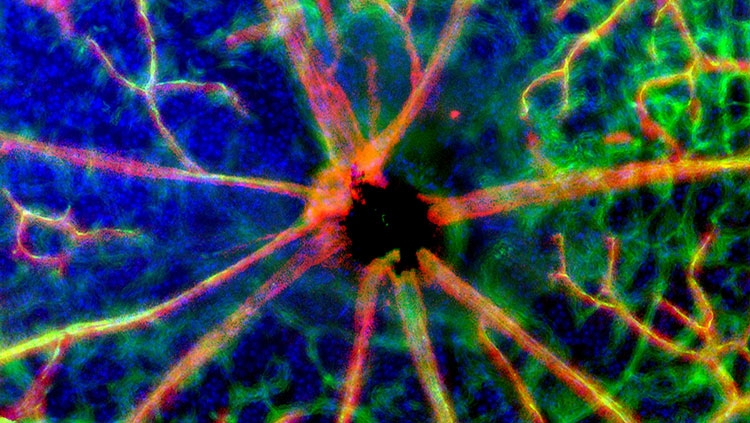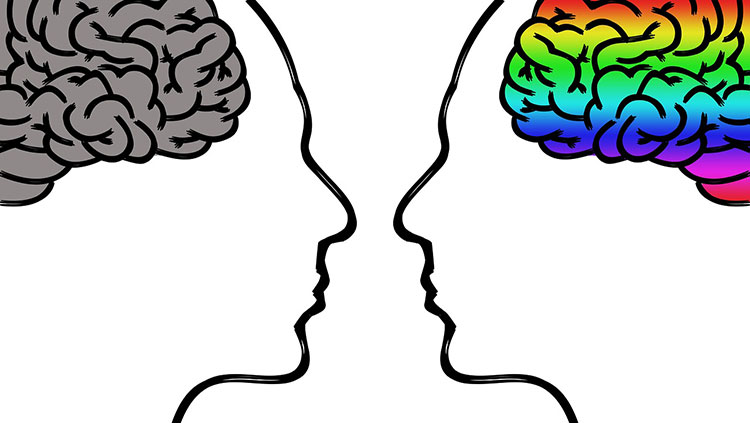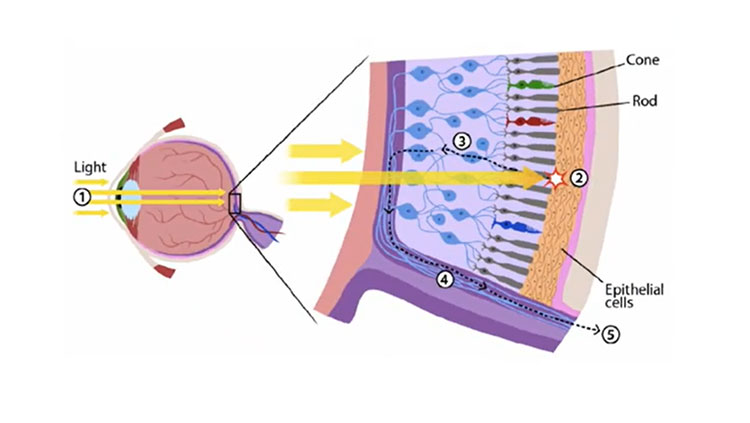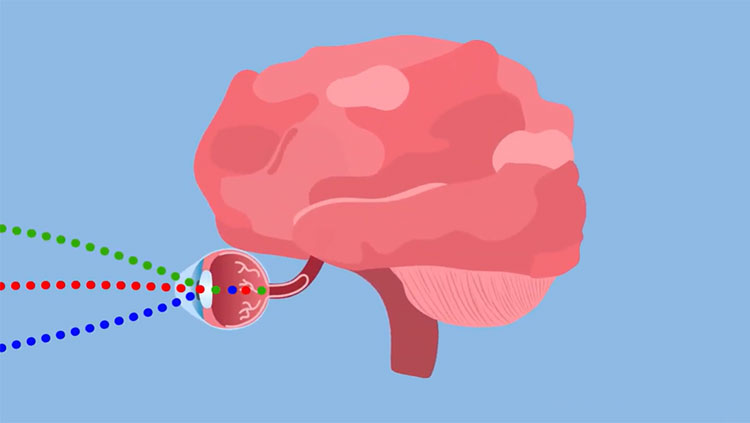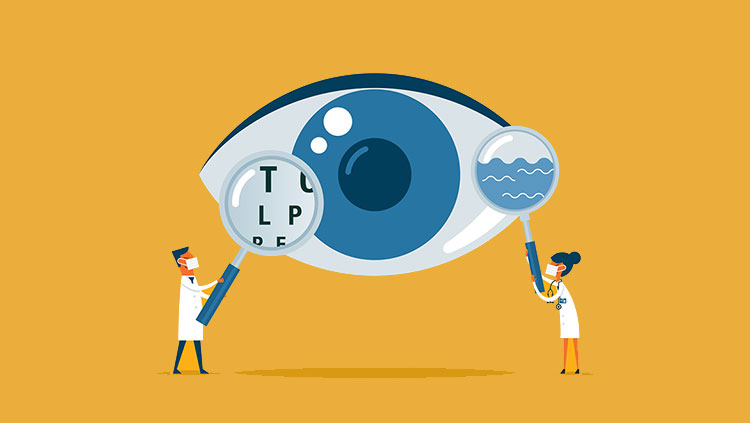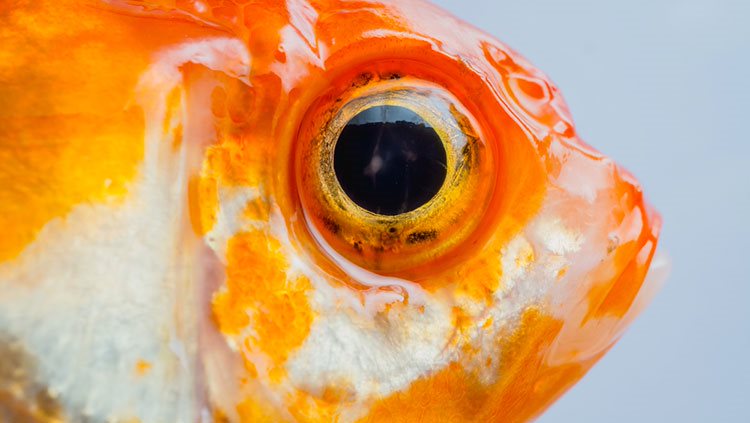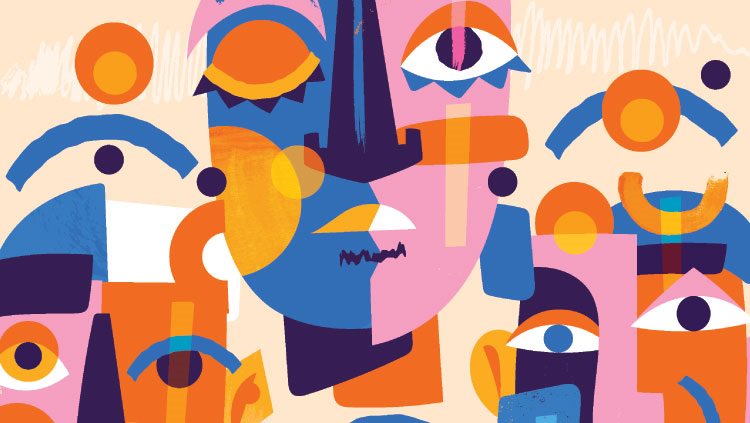The Information Conduit That Leaves You Partially Blind
- Published21 Jan 2020
- Author Charlie Wood
- Source BrainFacts/SfN
Not unlike its astronomical counterpart, this black hole also swallows light and information. You might not have noticed, but the scene each eye delivers features a gaping blind spot — nine times as large as the full moon from where we stand on planet Earth. At the back of each eyeball, blood vessels (seen here in red) and nerves gather before continuing straight back into your skull as the optic nerve. The place where they come together is called the optic disk (seen here in black). This spaghetti-sized dot lacks light sensing cells, leaving it effectively blind. The bottle neck is linked to sight problems such as glaucoma, when fluid circulation fails, leading to increased pressure on the optic nerve.
The left eye’s blind spot hovers a bit to the left when you’re looking straight ahead, and vice versa on the right. Normally, each eye helps the other out to create a complete field of vision, and even when one eye is closed, the brain makes up details to keep you from noticing.
CONTENT PROVIDED BY
BrainFacts/SfN
References
Glaucoma. (2018, November 14). Retrieved from https://www.mayoclinic.org/diseases-conditions/glaucoma/symptoms-causes/syc-20372839.
Quigley, H. A., Brown, A. E., Morrison, J. D., & Drance, S. M. (1990). The Size and Shape of the Optic Disc in Normal Human Eyes. JAMA Ophthalmology, 108(1), 51–57. doi: 10.1001/archopht.1990.01070030057028
Ramachandran, V. S., & Rogers-Ramachandran, D. (2005, April 1). Mind the Gap. Retrieved from https://www.scientificamerican.com/article/mind-the-gap/.
Also In Vision
Trending
Popular articles on BrainFacts.org


